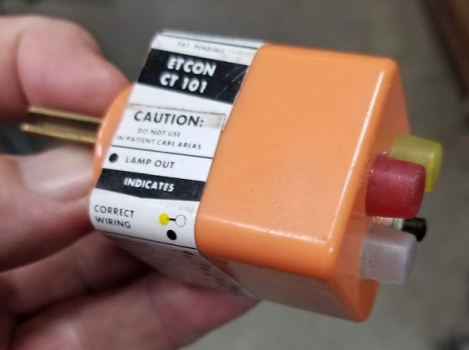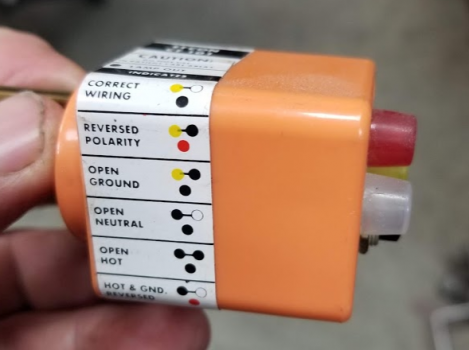EdCaffreyMS
"The Montana Bladesmith"
DiverDale's post about the toaster oven, and him saying he's an electrical engineer, prompted me to ask this question.
Some of you know I use an old Ridgid 400 pipe threader, as a hot twister in the Forging shop.

Because things have to happen so quickly when twisting hot stock, the switch location on these machines (mounted on the right side of the machine) is pretty much useless. You just don't have the time to get the hot stock into the twister, then go around the machine, to to the switch, and then have enough heat left to twist.
So, I wired in a foot switch, according to this diagram, that is in the manual:
 Here's is my problem: With the Forward/Reverse switch on the machine, set to the Reverse position, everything operates as it should. The foot switch turns the machine on/off and it rotates counterclockwise. When I place the Forward/Reverse switch to the Forward position, and then step on the foot switch, I get a hum, and all the lights in the shop "drag down". I've experimented with switching around various wires from the motor to the plug, but still get the same thing.
Here's is my problem: With the Forward/Reverse switch on the machine, set to the Reverse position, everything operates as it should. The foot switch turns the machine on/off and it rotates counterclockwise. When I place the Forward/Reverse switch to the Forward position, and then step on the foot switch, I get a hum, and all the lights in the shop "drag down". I've experimented with switching around various wires from the motor to the plug, but still get the same thing.
What adds to my confusion is the following wiring diagram.... it shows that the motor has a blue wire..... mine does not..... rather then blue, I have black, as in the above diagram.

I don't know how to make it work with the foot switch in both forward and reverse..... so I've been using it in reverse/CCW only, but it would sure be nice to be able to twist either direction, using the foot switch as an on/off switch. I can follow a wiring diagram, and can usually figure these thing out, given enough time, but this one has had me stumped for a long time. Any ideas or help would be greatly appreciated!!
Some of you know I use an old Ridgid 400 pipe threader, as a hot twister in the Forging shop.

Because things have to happen so quickly when twisting hot stock, the switch location on these machines (mounted on the right side of the machine) is pretty much useless. You just don't have the time to get the hot stock into the twister, then go around the machine, to to the switch, and then have enough heat left to twist.
So, I wired in a foot switch, according to this diagram, that is in the manual:

What adds to my confusion is the following wiring diagram.... it shows that the motor has a blue wire..... mine does not..... rather then blue, I have black, as in the above diagram.

I don't know how to make it work with the foot switch in both forward and reverse..... so I've been using it in reverse/CCW only, but it would sure be nice to be able to twist either direction, using the foot switch as an on/off switch. I can follow a wiring diagram, and can usually figure these thing out, given enough time, but this one has had me stumped for a long time. Any ideas or help would be greatly appreciated!!


